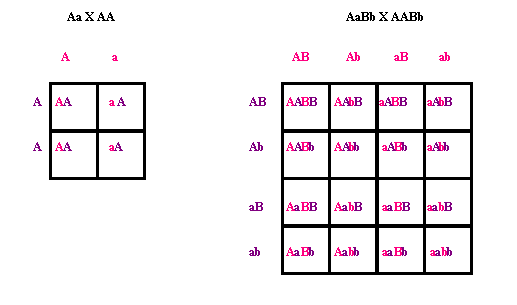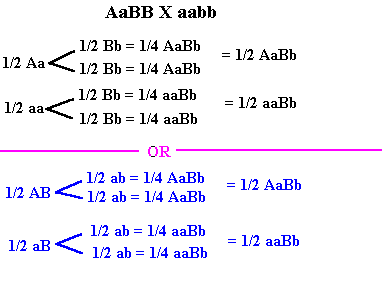MENDELIAN GENETICS
One of the first scientists to work with genes and heredity was an Austrian monk by the name of Gregory Mendel. As the "Father of Genetics", he set the foundation for many new advances in biotechnology through the study of peas. While performing his research, Mendel discovered that a certain trait is carried by a specific gene that is found on each homologous chromosome. Some traits, such as pea color, have only two alleles (possible gene characteristics). When an animal posses two identical alleles of that gene, they are said to be homozygous. However, an animal with two different alleles can be called heterozygous.
Sometimes, a trait will have a dominant gene that will mask a recessive gene. For instance, assume a dominant (G) represents a green color in peas, and a recessive (g) denotes a yellow color. Now, a pea with t he genes GG will be green is color, gg is yellow, and Gg is green due to the dominant gene, G.
The GG, Gg, and gg above are known as genotypes. They denote the specific genes for that trait. The colors, yellow and green, are known as the phenotype, or the physical appearance of that genotype.
When mating two parents whose genotypes are known, offspring phenotypes, genotypes, and ratios can easily be found. Eventually, with practice, you can determine the parents from the offspring. There are two methods for determination of the ratios: Punnett-Square and Forkline.
For the punnett-square, each possible gene combination for a male gamete is located by columns, and the possible female gametes are located on the rows. From there, the ratios of the phenotypes and genotypes can be figured.

The fork line method can be used by figuring the occurrence of each gene or set of genes to be found in the gamete, and then multiply them together. This can be multiplied by figuring each trait or combination of traits separate for both the male and female, or each gene individually regardless of sex.

Now let's try a couple of examples. A problem will be given, and after you have worked out a possible solution, you may click on the solution format. There are a series of problems that allow you to build on your skills. Good luck!
- Continue to Problem #1
- Skip to Multiple Traits
- Return to Main Menu
|
|
© 2003-2025:
USA · USDA · NRPSP8 · Program to Accelerate Animal Genomics Applications.
|
||